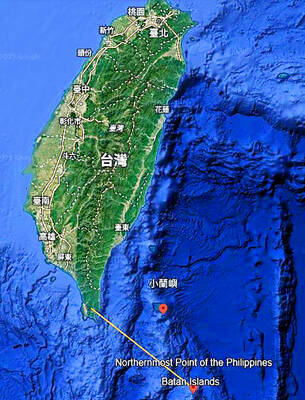The slowdown in the US economy may have some effect on demand for Asian exports, but its overall impact on the region is likely to be relatively well contained, the IMF said.
The region is expected to see 8.4 percent growth, down marginally on last year's 8.9 percent, the IMF said in its latest global report on Wednesday.
In its World Economic Outlook, the IMF said the short-term outlook for growth in Asia remains very strong.
The report said the US slowdown is being driven by the housing sector "with its effects on overall demand for exports from Asia likely to be muted."
In contrast, the IMF said, the global demand for electronic goods, which is important for Asian regional exports, has remained generally good despite a slight slowdown toward late last year.
The report also said that the importance of the US as a destination for Asian exports has been declining in most countries -- with the important exception of China -- and the role of regional trade has been rising.
The IMF report on emerging Asia, which does not cover Japan, Australia or New Zealand, said that economic activity had continued to expand at a brisk pace, led by strong growth in India and China.
IMF chief economist Simon Johnson, however, warned of a lingering risk that the Chinese and Indian economies could overheat despite recent measures meant to rein in racing growth.
Johnson told a press conference here presenting the report that fixed asset investment in China had grown at a "torrid pace" and there was still a risk of overheating.
"It is unclear whether the Chinese economy will slow consistently in response to efforts to rein in rapid credit growth given the constraints on monetary policy posed by the tightly managed exchange rate," he said.
As for India, "spare capacity in the economy remains very low and overheating remains a risk despite recent monetary policy tightening," he said.
In China, real gross domestic product expanded by 10.7 percent last year on the strength of solid investment and export growth, "although the pace of fixed asset investment cooled in the second half of the year" in response to a tightening of interest rates, according to IMF's report.
In India, real gross domestic product growth of 9.2 percent was supported by the strength of consumer spending, investment and exports, the report said.
The demand for products, particularly electronic goods, helped accelerate growth in South Korea as well as in Taiwan, Hong Kong and Singapore, the IMF said.
The report said the pace of activity has picked up in Thailand and Malaysia while damage to agriculture from typhoons led to a slowdown late last year in the Philippines.
Inflationary pressures across the region remain generally well contained, the IMF said, with monetary tightening -- and currency appreciation in some countries -- having limited the second round impact of oil price increases last year.
The IMF said Thailand's economy would expand 4.5 percent this year from 5.0 percent last year. Singapore's growth will be down more steeply from 7.9 to 5.5 percent, it said.
The report said that Taiwan's economic growth would slow from 4.6 to 4.2 percent, the report predicted, and South Korea's from 5.3 to 4.6 percent.
Indonesia, the region's third-most populous country, was set to see growth pick up from 5.5 percent last year to 6.0 percent this year, the IMF said.
A decade after the Asian financial crisis, the report warned that financial markets in the region remained vulnerable to any unanticipated rise in global risk aversion.
It also highlighted emerging threats to growth, saying bird flu, which has killed about 170 people across the world but mostly in Asia, continued to pose a risk.

SECURITY: As China is ‘reshaping’ Hong Kong’s population, Taiwan must raise the eligibility threshold for applications from Hong Kongers, Chiu Chui-cheng said When Hong Kong and Macau citizens apply for residency in Taiwan, it would be under a new category that includes a “national security observation period,” Mainland Affairs Council (MAC) Minister Chiu Chui-cheng (邱垂正) said yesterday. President William Lai (賴清德) on March 13 announced 17 strategies to counter China’s aggression toward Taiwan, including incorporating national security considerations into the review process for residency applications from Hong Kong and Macau citizens. The situation in Hong Kong is constantly changing, Chiu said to media yesterday on the sidelines of the Taipei Technology Run hosted by the Taipei Neihu Technology Park Development Association. With

CARROT AND STICK: While unrelenting in its military threats, China attracted nearly 40,000 Taiwanese to over 400 business events last year Nearly 40,000 Taiwanese last year joined industry events in China, such as conferences and trade fairs, supported by the Chinese government, a study showed yesterday, as Beijing ramps up a charm offensive toward Taipei alongside military pressure. China has long taken a carrot-and-stick approach to Taiwan, threatening it with the prospect of military action while reaching out to those it believes are amenable to Beijing’s point of view. Taiwanese security officials are wary of what they see as Beijing’s influence campaigns to sway public opinion after Taipei and Beijing gradually resumed travel links halted by the COVID-19 pandemic, but the scale of

A US Marine Corps regiment equipped with Naval Strike Missiles (NSM) is set to participate in the upcoming Balikatan 25 exercise in the Luzon Strait, marking the system’s first-ever deployment in the Philippines. US and Philippine officials have separately confirmed that the Navy Marine Expeditionary Ship Interdiction System (NMESIS) — the mobile launch platform for the Naval Strike Missile — would take part in the joint exercise. The missiles are being deployed to “a strategic first island chain chokepoint” in the waters between Taiwan proper and the Philippines, US-based Naval News reported. “The Luzon Strait and Bashi Channel represent a critical access

Pope Francis is be laid to rest on Saturday after lying in state for three days in St Peter’s Basilica, where the faithful are expected to flock to pay their respects to history’s first Latin American pontiff. The cardinals met yesterday in the Vatican’s synod hall to chart the next steps before a conclave begins to choose Francis’ successor, as condolences poured in from around the world. According to current norms, the conclave must begin between May 5 and 10. The cardinals set the funeral for Saturday at 10am in St Peter’s Square, to be celebrated by the dean of the College